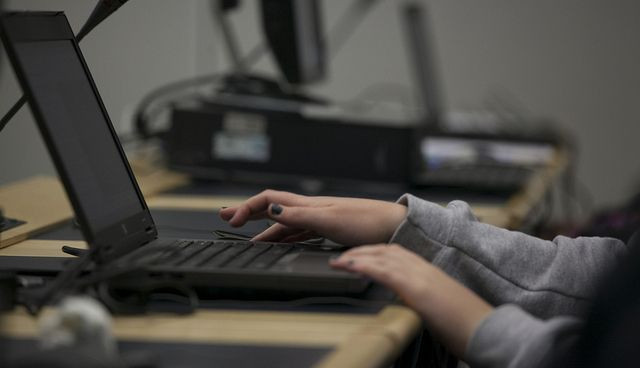Online News Represents Men’s Views More Than Women’s: Forbes, BBC Among Most Unbalanced News Sources

A new study, which makes use of artificial intelligence to analyze vast reams of data, declares online news is imbalanced. Following analysis of more than 2 million articles, the researchers conclude men’s views and voices are heard more often than women’s.
“From the top 15 news outlets for which we have data, we found that Forbes was the least balanced of the news outlets in the mention of entities in the text, with 81 percent being males, closely followed by the BBC at 80.9 percent,” wrote the authors in their concluding comments.
A previous report published in 2010 from Roger Desmond, a professor at University of Hartford, and Anna Danilewicz, a broadcast journalist at Cox radio, revealed women were on but not in the news, as they put it. After examining 580 TV news stories, they discovered female reporters were more likely to present human interest and health-related stories (cough, cough). Meanwhile, men were used as experts more often than women — significantly so, according to their analysis.
Dr. Nello Cristianini, a professor of AI at University of Bristol, worked with social scientist, Dr. Cynthia Carter of Cardiff University to further investigate a possible reporting bias. They wondered, how many men and how many women are mentioned in the news or portrayed in images in online news sources?
To answer this question, they collected more than 2.3 million news articles from over 950 news outlets with a web presence. Specifically, they looked at stories written in English and appearing on the Really Simple Syndication (RSS) feed; these most popular stories on each website were analogous to front page stories of a print newspaper. The stories spanned a six month period ending in April 2015.
Using Support Vector Machines and other techniques, the team automated the task of recognizing people and gender in both images and text. From the original dataset, they extracted more than 2.1 million references to named persons and more than 1,3 million images resolving the gender of names and faces.
Exceptions
Though proportions varied across topics and outlets, the research team found males were more often represented than females in both images and text. Overall, they calculated a 77 percent likelihood the person mentioned in the text would be male, while in images that likelihood was 69.6 percent. Of the 15 outlets studied, News.com.au was the closest to gender balanced, the researchers say, with a slightly lower than average probability of a textual mention, 69.8 percent, and facial image, 65.1 percent, being male.
While Forbes and BBC were least balanced in terms of written mentions, Fox News was the least balanced in its choice of images; the likelihood of seeing a male face on that site equaled 76.5 percent, the researchers say.
As might be expected, Fashion was the only category where females were more likely to be featured in both text and image; probability of a male mention amounted to 45.9 percent, probability of a male image just 36.1 percent. Finally, only one topic, politics, featured females in the text more often than in images. Thank you, Angela Merkel?
"Automated approaches that combine computer vision and natural language processing technologies with vast data samples make it possible, for the first time, to gather extensive empirical support, on a scale previously inconceivable, for long-standing claims around the marginalisation of women in the news," wrote the authors of the study. Ultimately, the use of AI to illuminate potential societal wrongs is the strangest news of all.
Source: Jia S, Lansdall-Welfare T, Sudhahar S, Carter C, Cristianini N. Women are seen more than heard in online newspapers. PLOS ONE. 2016.
Published by Medicaldaily.com



























